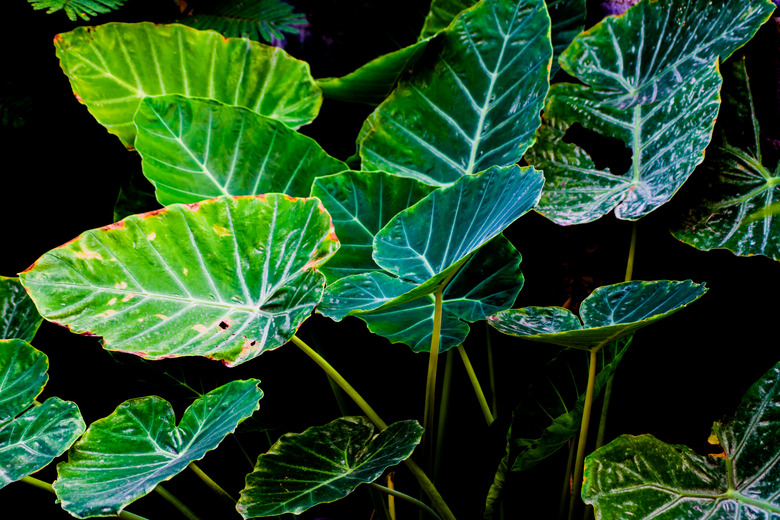How To Cut Back An Elephant Ear Plant
Everyone knows that the recipe for a healthy plant includes sunlight, water and hearty soil, but an often overlooked essential is cutting plants back, especially when they start to overgrow or are outdoor varieties approaching their dormant season in the winter. Elephant ear plants are among those in need of somewhat regular pruning, which can easily be done with just a couple of basic gardening tools and a few minutes of your time.
What's an Elephant Ear Plant?
What's an Elephant Ear Plant?
Elephant ear plants (Alocasia and Colocasia spp.) are tropical plants that can live outdoors all year long in only the warmest climates of USDA zones 8-11 (depending on species and cultivar). Although their impressive leaves will die to the ground in the colder, winter temperatures, they'll grow back every spring when planted in their perennial range. Elephant ears can also be grown indoors using containers, though they are most commonly found in gardens or landscaping layouts for their full, heart-shaped leaves and oversized appearance.
Why Cut?
Why Cut?
Cutting away stalks or leaves of a plant may feel a little counterproductive, especially if you're trying to encourage yours to grow big and full. It's important to remember that removing the parts that no longer serve the overall function of the plant potentially encourages more growth or flowering. This allows light and nutrients to reach smaller, younger leaves that might otherwise be hidden under the natural canopy elephant ear plants tend to provide.
How to Cut Back Your Plant
How to Cut Back Your Plant
Cutting back an elephant ear plant is a very quick and easy task that only requires a couple of tools: a sharp set of gardening shears and a rag soaked in alcohol. Before you get started, locate which leaves are in need of trimming. Dead or dying elephant ear leaves will often appear to be yellowing or may have a brownish color. Sever the stalk close to the base of the plant, taking care to make a clean cut and not tear or rip the stem apart. Wipe the blades of the pruning shears with the alcohol-soaked rag before cutting each stalk to prevent the possible spread of disease. Discard cut stalks and leaves in a compost pile or other waste-bearing receptacle.
For those in colder climates, small pups, or young offshoots, of your elephant ear plant can be easily divided and stored indoors until the frost has melted and its ready for replanting in the spring. You can also lift the bulblike structures (called corms) and store them indoors during winter.
To divide the pups, wait until a cool fall day when active growth has slowed down. Using a clean shovel, remove the baby from the main mass of plants, making sure that each pup has a strong system of roots to go with it. Place them in potting soil and keep in a sunny spot of the house, watering regularly all winter, and plant outdoors once spring has arrived.
